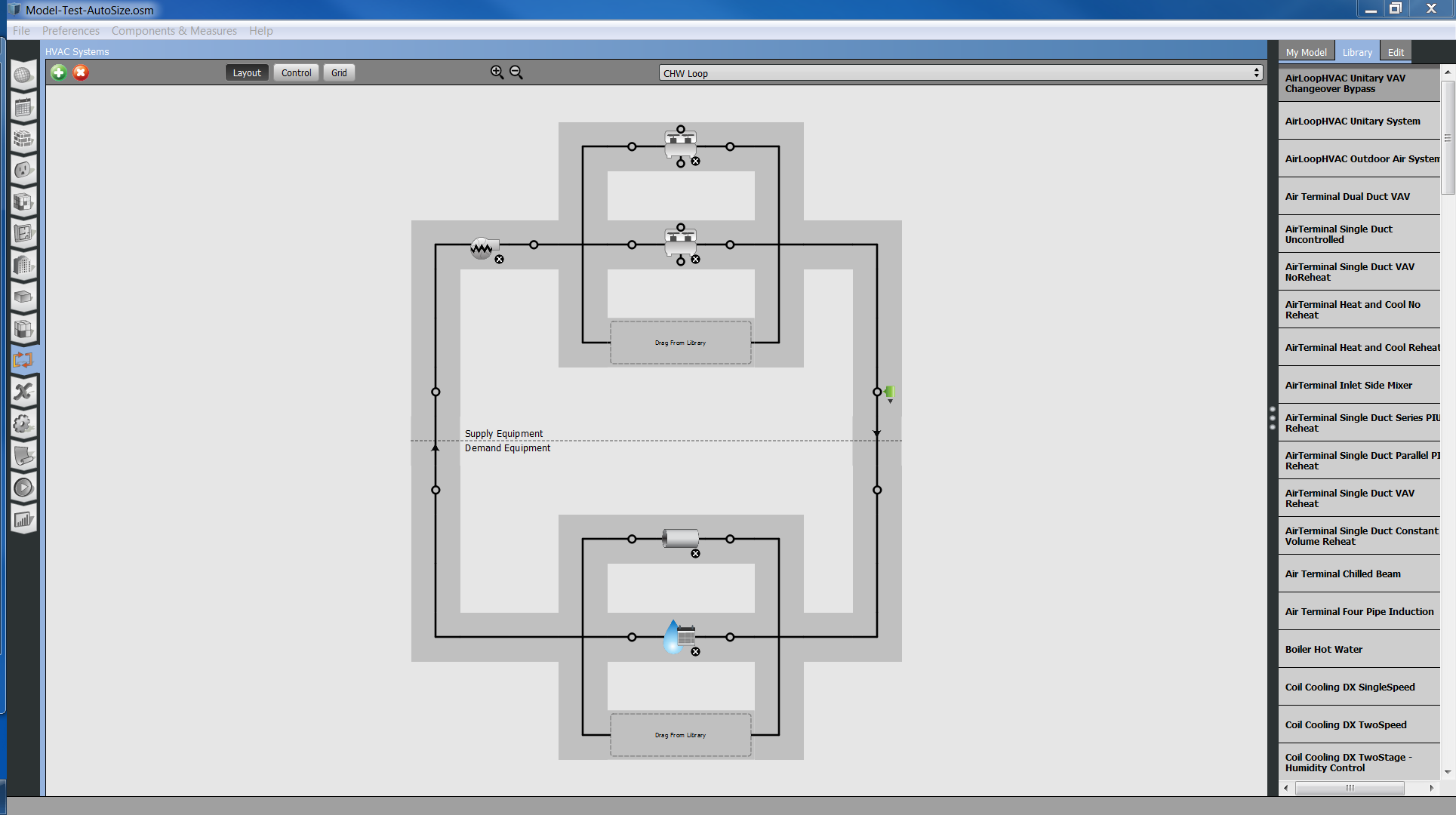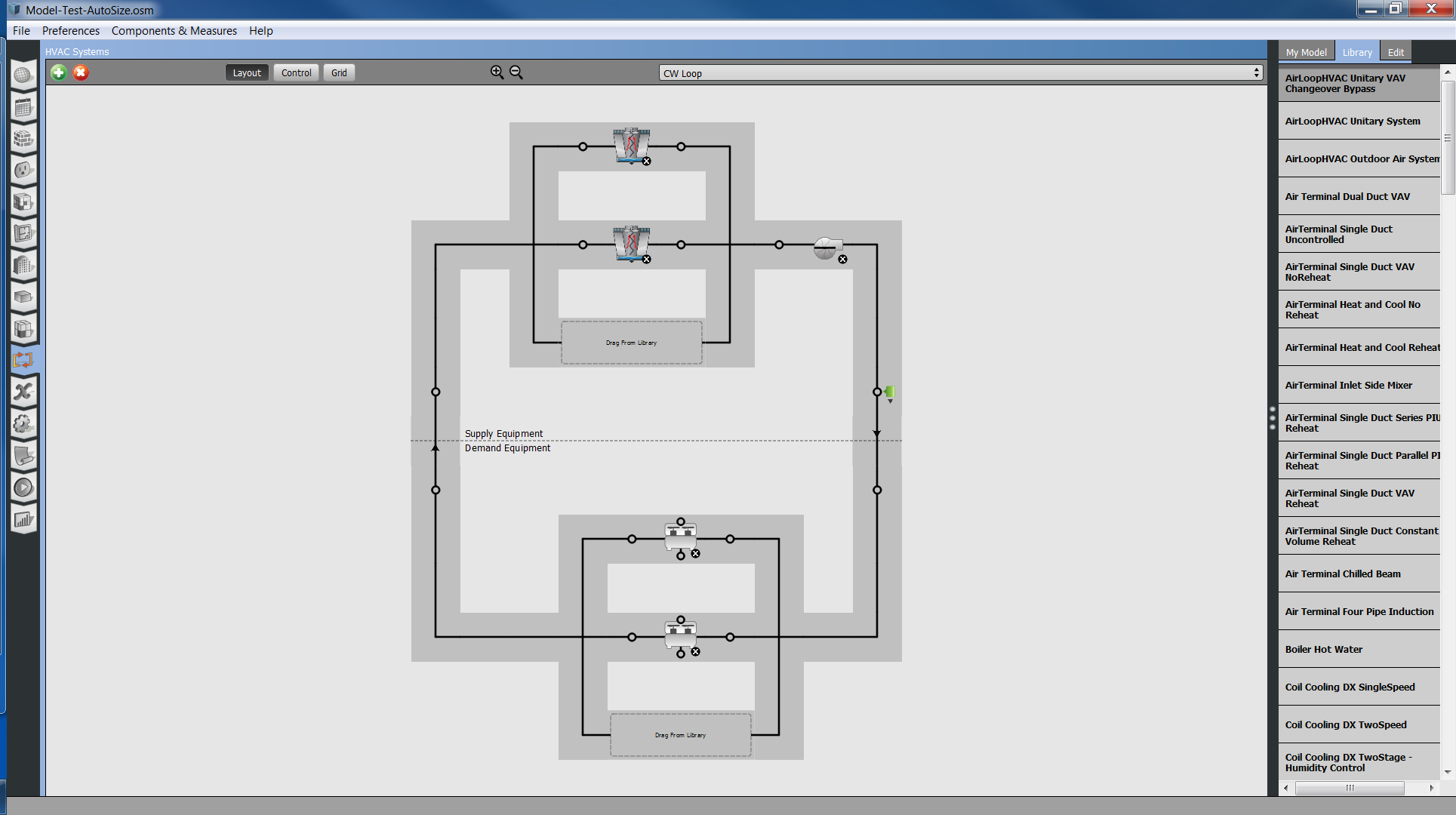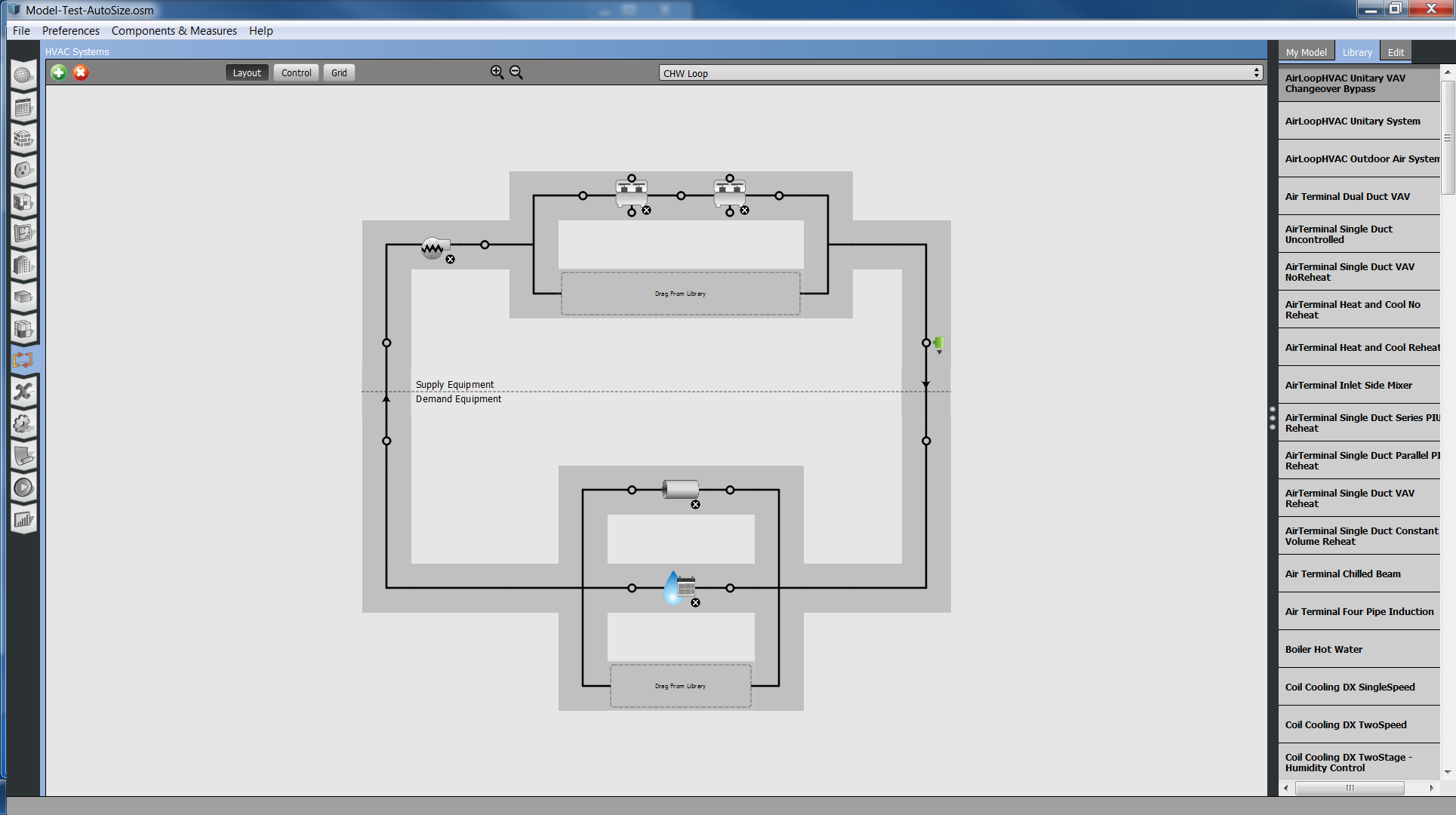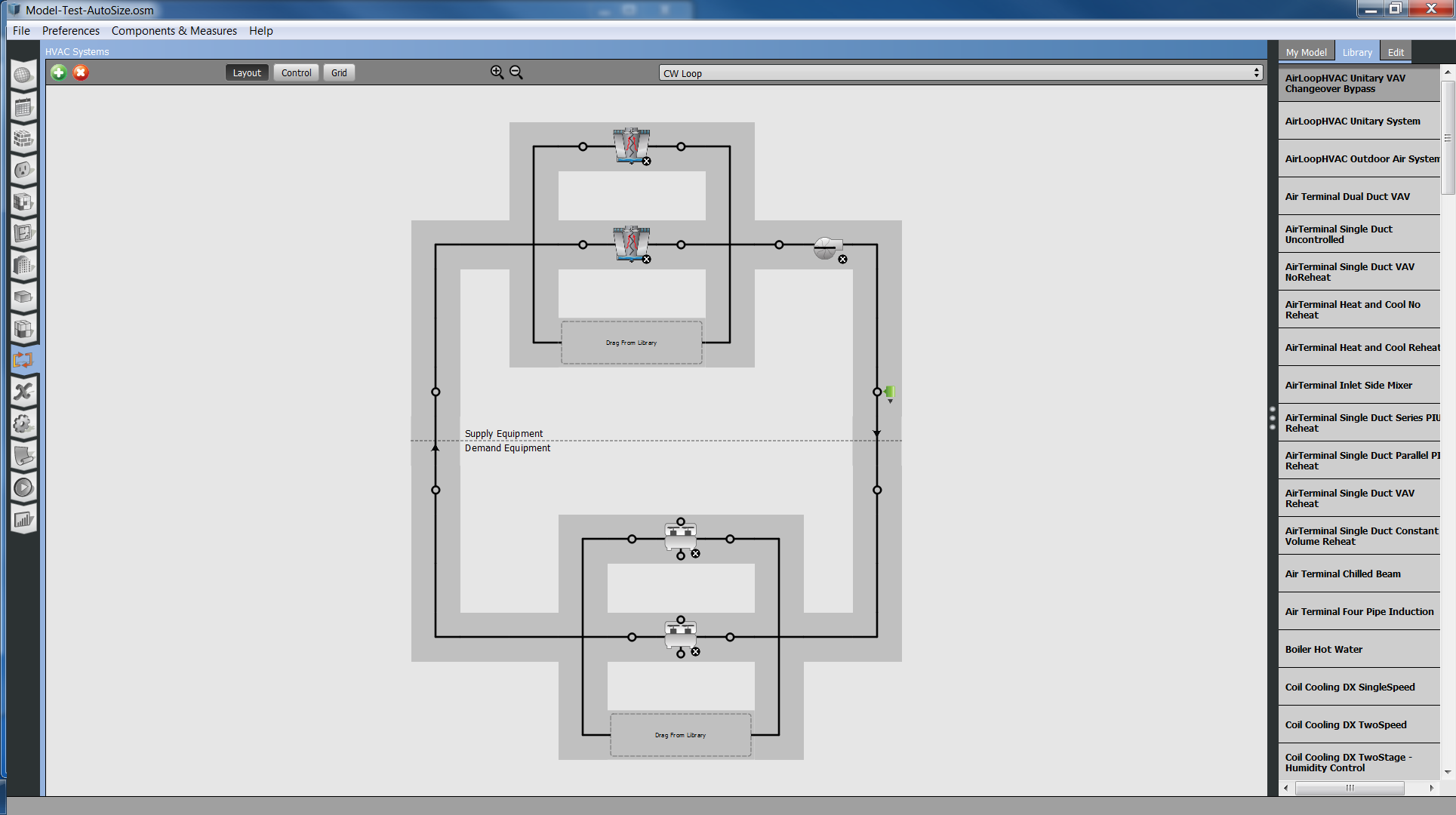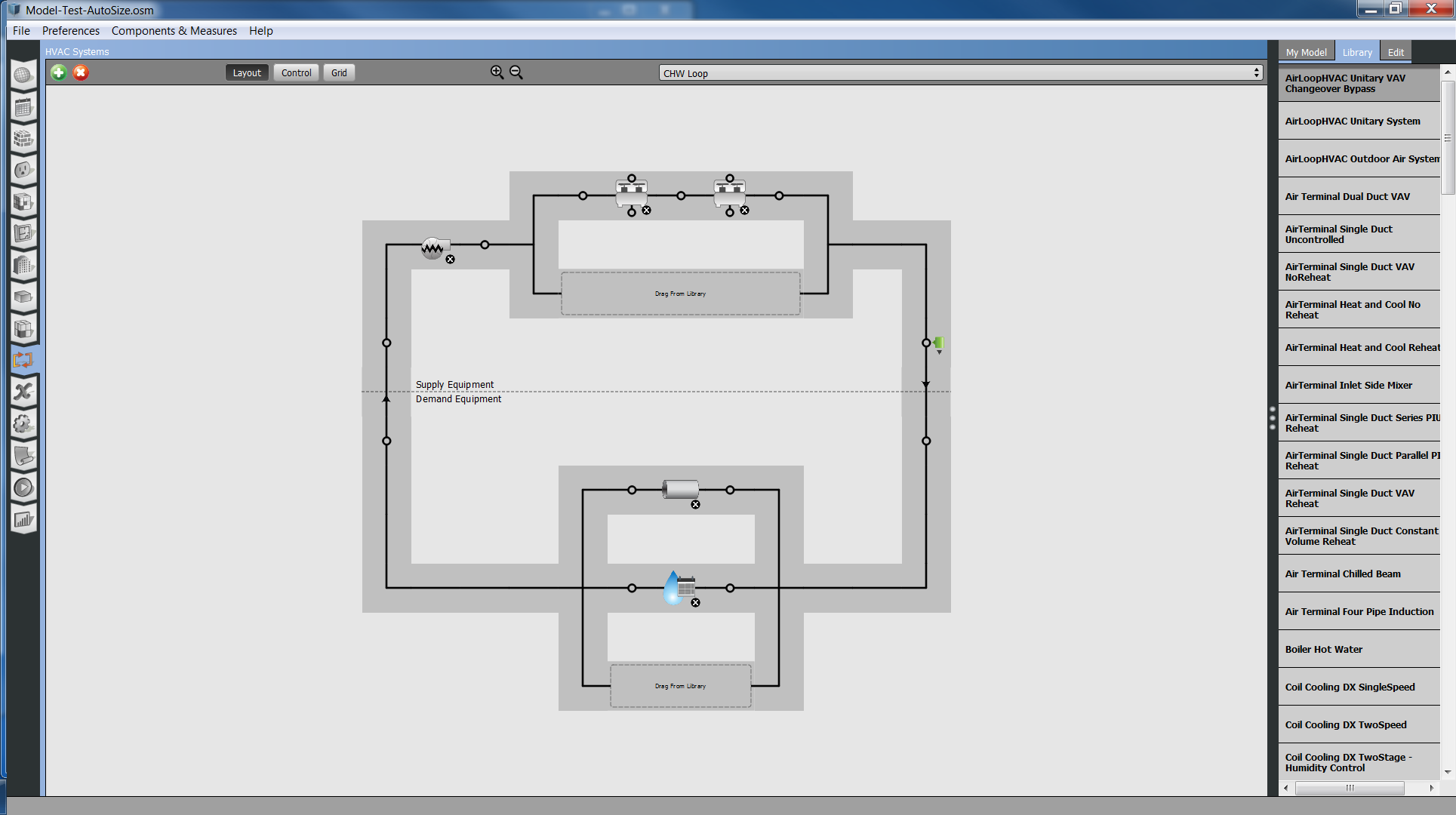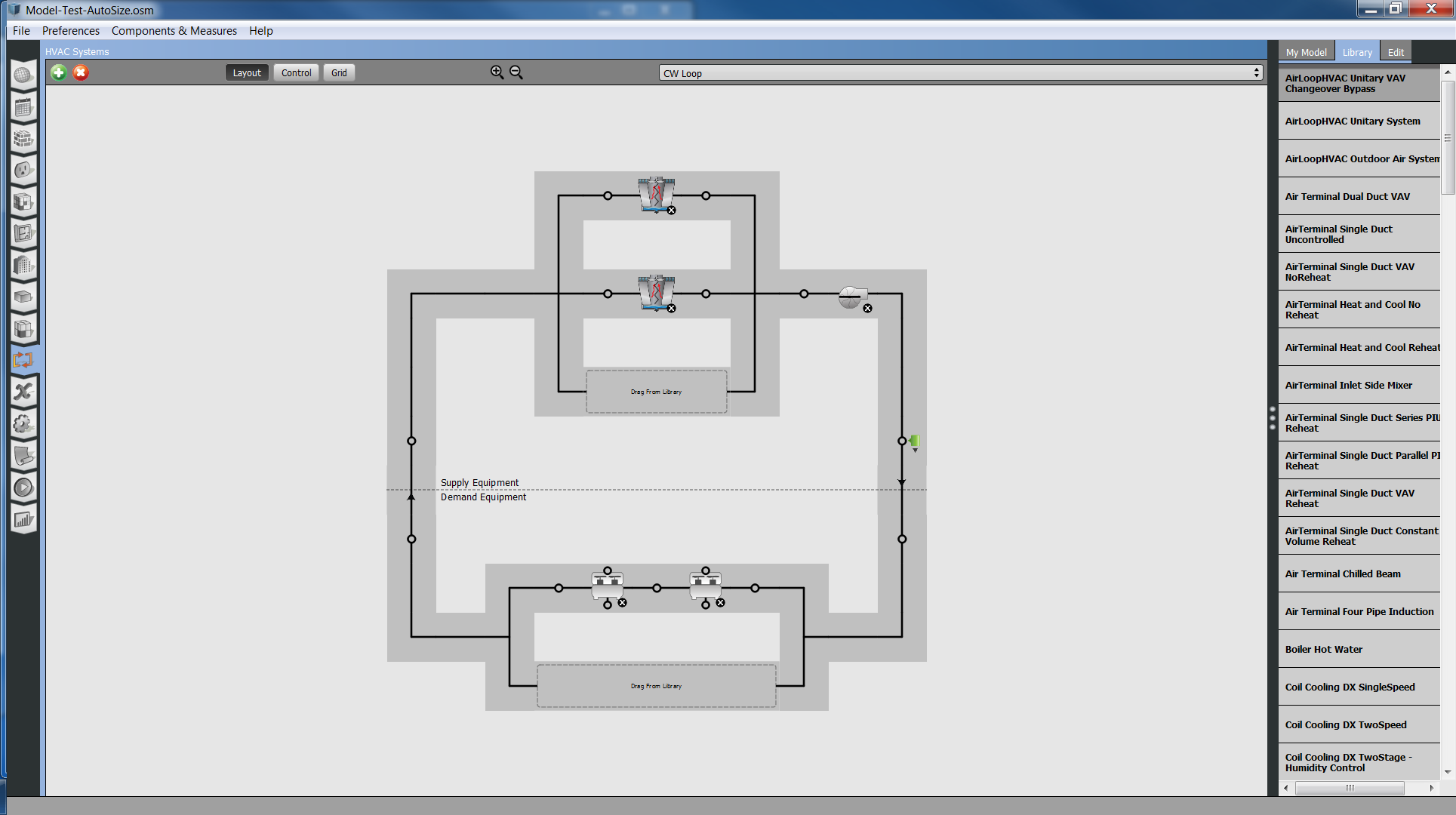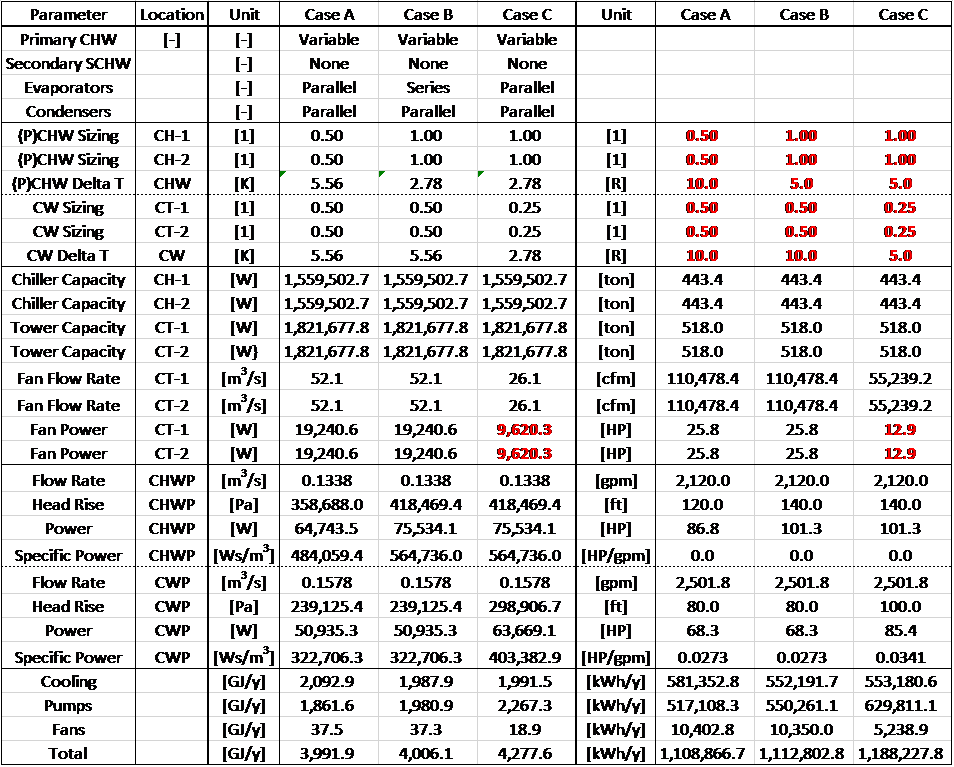chillers in series
I am trying to model a single pump/dual chiller Variable Primary Only loop, but with chillers in series, not in parallel. When they are in parallel, the plant auto-sizing correctly determines 120 kg/s for the combined pump that drives both chillers (at their inlet), i.e. 60 kg/s per chiller. When they are in series, the plant-auto-sizing incorrectly determines 60 kg/s for the combined pump, when it still should be 120 kg/s, i.e. 120 kg/s per chiller. The loop design temperature difference is 10 oF. I should think that applies the same whether the chillers are in parallel or series. The demand side of my plant is a simple load profile. Can someone get me unstuck, or can OpenStudio/EnergyPlus not handle chillers in series?



